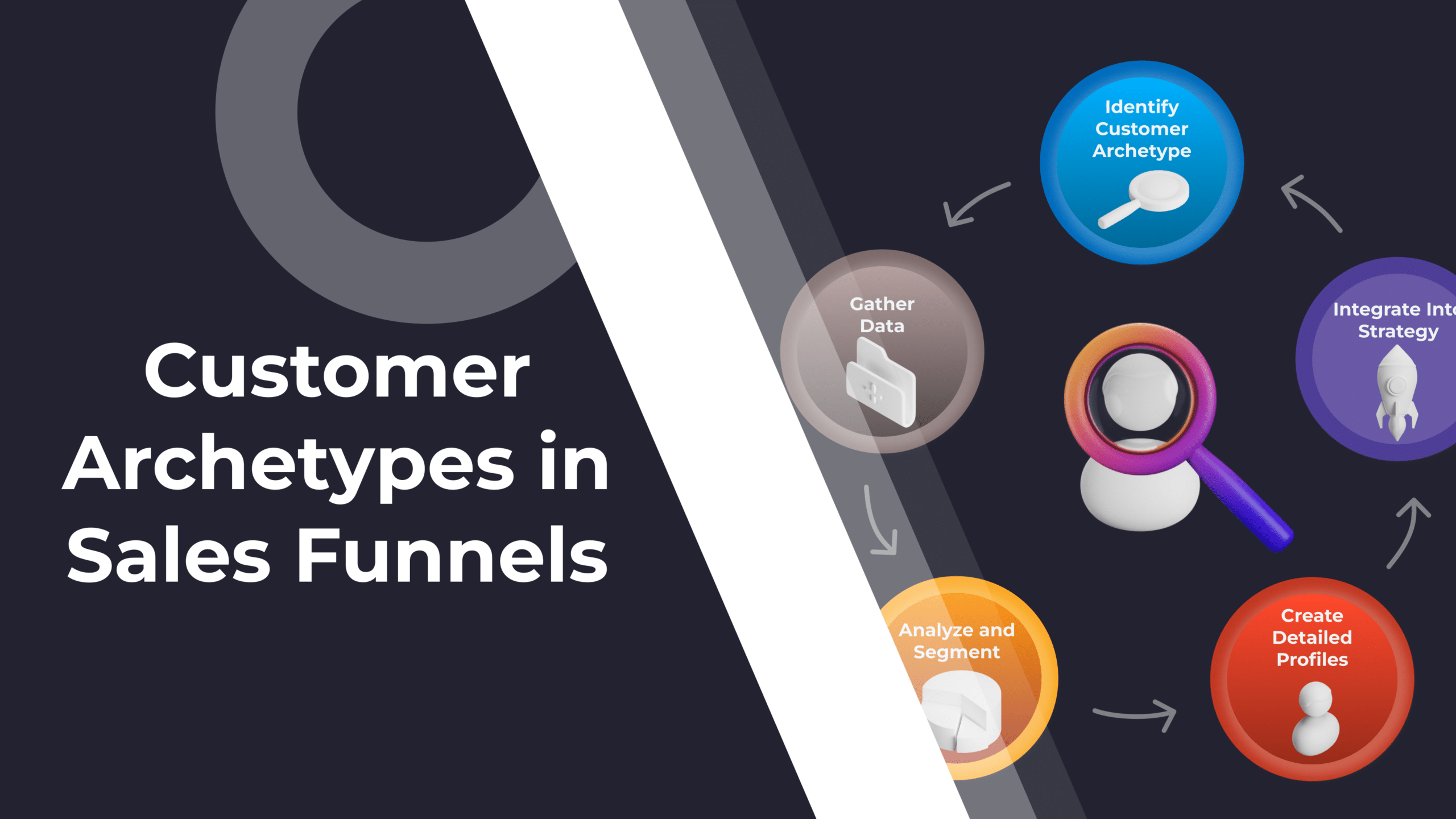The product roadmap is not a one-and-done process. It’s an ongoing cycle of listening, learning, and iterating. Your product roadmap is a living document, continually evolving as you gather more customer insights.
The relationship between customer feedback and product development has transformed from a mere afterthought to becoming the North Star. The voice of the customer has moved from passive to active, where participants are shaping it.
Certainly, integrating the role of Customer Success into your product roadmap is key to its evolution. No longer just a post-sale function, CS has emerged as a crucial contributor to product strategy in what is commonly called “feedback-driven development.”
Get ready, and let’s dive together right into:
- How customer success is influencing product roadmaps
- How the collaboration between these two changed over time
- Effective stages of collaboration between customer success and product
- A list of case studies and recommendations from companies using this approach
- Some additional FAQs on the collaboration between customer insights and product roadmaps
The Influence of Customer Success on Product Roadmaps
The Rise of Feedback-Driven Development
Product Management was the orchestra and conductor for a product’s roadmap until recently. They gathered feedback, checked competitors, navigated a sea of high-ranking opinions, and ultimately decided what features took precedence. Fast-forward to today, and there’s a fresh, new take on this process from customer success teams.
In some PLG SaaS companies, the roadmap is becoming increasingly co-authored. Customer success teams, who have their fingers on the pulse of customer needs, contribute significantly, or totally, to what gets built next. Why? Because they’re committed to revenue targets and constantly collecting invaluable customer data.
So, if you’re in Product Management, it’s time to consider a duet rather than a solo performance. Embrace the insights Customer Success teams bring and incorporate Feedback-Driven Development into your strategy. The result will likely be a product roadmap more attuned to customer needs than ever before.
Challenges in Influencing Product Roadmaps
As customer numbers increase or their needs evolve, it becomes challenging for CS teams to manage expectations and effectively align customer requests with the product team. It often leads to communication issues and a need for more confidence in the product.
Common issues include:
- A disconnection between the CS and product teams.
- There is a need for more discussions focused on roadmaps.
- Different perspectives on the customer experience.
To collaborate more efficiently, CS professionals need to grasp the priorities of the Product team, only by understanding each other’s goals the two teams can sync and develop workflows that promote shared wins.

How CS Teams Can Influence Product Roadmap
We’ve invited Customer Success Managers and Product professionals to share direct advice so we can explore how different customer success teams leverage insights to influence their product roadmap.
Customer-Centric Product Development
Some customer success teams believe in a holistic approach, using customer insights throughout product development. These insights serve as the guiding light for every decision, ensuring alignment with customer needs and expectations.

Leveraging Customer Success Key Stakeholders in Product Development is instrumental to a growing business that wants to continuously provide value to its customers.
Every company is like a three-legged chair. You would have the money, the customer, and the product. If the latter are not aligned, the first cannot simply happen.
In today’s macro-environment, it’s all about stability and growth. A stable product can only be kept up to date and held at product-market fit via the voice of a company’s customers.
Customer feedback is crucial in determining product roadmap.
Every company that has a customer success team should assign at least 1 CSM to the product team to have a direct feed into what the customers are looking to solve, what are the most novel buzzwords around tech and automation, what makes people’s lives easier, what saves them time so they can invest their time into more resourceful action items.
In my personal experience, products that offer a swift user click-path are the ones that win the end users’ hearts.
A robust product that is built from a dream and brought up from the voice of hundreds of thousands of customers is a product that will be fit for the market decades from now.
One item that stands above standard feedback collection and implementation is knowing who your customer is. Your revenue streams allow you to understand where you need to adjust your product, where you would delight your customer segments with various features, and create a Customer Advisory Board.
Your top logos and heavy users can dictate a beautiful journey and experience, regardless of their industry affiliation.

Gathering customer feedback and insights is one of the most demanding customer success activities. The main goals are understanding customer satisfaction levels, product-related demands and preferences, churn risk, and potential upselling opportunities.
Customer Success, specifically from the product roadmap perspective, focuses on understanding customers’ take on how your product can better meet their needs by delivering the value they expect or enabling them to achieve their goals.
Feedback is a hidden gem.
You can obtain information by posing specific questions in a meeting with a single topic, during Onboarding sessions, during Business Reviews and Success Plan reviews, or simply by reading between the lines (some clients don’t provide any feedback at all).
Anytime I have any new insights, I:
– Focus on understanding the “why” underlying the feedback and ask the appropriate open questions
– Sort the requests into “must-have” and “nice-to-have”
– Make a business case outlining how the request or feedback will affect the customer’s business
– Talk it over with the product team.If the client’s feedback and demands are scalable and don’t indicate high customization, ask as the client’s ambassador.
It’s not necessary to anticipate praise all the time. It involves being aware of your product’s potential weak points without ignoring and undervaluing its strong points. All of this is capped off with a determination to ultimately add value for both the client and your company.”

“We use insights from Customer Success in our product roadmap by looking at the overall sentiment of what customers say.
If they express a need or desire to do something, we include it in our roadmap. If they’re not saying anything, we’ll ask them why—and then build their answers into the roadmap. That way, it’s there when they look for what they need!
I recommend that the customer success and product development teams have at least one quarterly meeting to discuss their respective teams’ progress. First, it allows the customer success team to highlight any issues or problems with the product and brainstorm solutions with the product developers. It can help identify potential issues before they impact customers’ product experiences.
Second, it allows the product developers to hear how customers use their products, including what they like and don’t like. It enables them to make changes based on customer feedback rather than relying on assumptions or guesses about what customers want.”

“The information obtained from our customer surveys and feedback channels allowed us to create a roadmap for our product that would satisfy our customer’s requirements and increase sales.
After receiving feedback from our customers about the complexity of the sign-up process, we made improvements to streamline it for new customers.
In the past, our product roadmap prioritized features over customer engagement despite receiving customer feedback. However, when we shifted our focus to factors like customer engagement, user experience, and overall customer satisfaction, our customer retention rate improved by 15%; incorporating customer feedback into our product roadmap enhanced our product’s user-friendliness, leading to increased sales.
The lines between Product and Customer Success teams are becoming less distinct, as many people now have roles in both. Customer Success will play a larger role in product development as technology advances.
Integration is essential to guarantee that every feature is technically proficient and user-friendly. The Customer Success team ensures that our products seamlessly integrate into our customers’ lives and workflows while consistently meeting their requirements.”
Collaborative Feedback Integration
Effective communication through regular meetings between customer success and product development teams is a common theme. These meetings facilitate collaboration, helping teams understand user needs and make better decisions.

“By identifying user needs and preferences, you can leverage this knowledge to prioritize features and improvements that align with your customer’s needs and expectations. You can also use customer insights and behaviors to assess and validate features.
For example, do users react to stickers or badges, or are they wasting time? Our insights revealed users in gameplay extended when badges were added as incentives.
It’s important for the Product and Customer Success team leads to meet and share knowledge, insights, and advice to set a path forward. One influences the other and ultimately results in a more user-centered service.”

“Customer insights drive every product decision we make. By analyzing support tickets, feedback surveys, usage data, and more, our CSMs spotlight pain points and opportunities.
For example, customers consistently needed help with our reporting functionality. Our CSMs gathered details on their ideal workflows, formats, and customizations. Armed with these user stories, our product team revamped the entire reporting module. The overhaul directly answered user needs and increased subscription renewals. Customer success is our compass for enhancements that create value.
I recommend cross-functional QBRs where CSMs brief product teams on major customer wants. Product managers should sit in on CSM calls periodically to hear needs firsthand. Also, it empowers CSMs to submit and prioritize feature requests from users. Ensure roadmaps have a voice in the customer section informed by CSM insights.
The collaboration between customer success and product development will only get tighter. As the adoption of customer-centric business models grows, companies will rely on CSMs as the definitive voice of the user. Product managers and CSMs work as interconnected partners, informing each other’s work daily. This unified effort to solve customer problems will become a competitive advantage.”

“A game changer for us, as a customer experience software, was building a seamless, scalable system that funnels every piece of customer feedback to the product team’s doorstep. It gives them a direct line to all customer feedback and ensures no valuable insights slip through the cracks.
Make sure to design your feedback system in a way that allows you to track the customers who have submitted feature requests.
When these features come to life, make it a standard practice to promptly give the customers a heads-up. It isn’t just a gesture; it’s a strategic move.
It demonstrates responsiveness and underscores the weight you give to customer input. The result is a motivated group of customers who are more than ready to share their thoughts the next time.
It’s all about nurturing that feedback loop.”

“It’s more important than ever to build products that a customer needs instead of something we ‘think’ a customer wants. To understand where potential customers have gaps in their workflows and what they are willing to pay to solve, you’ll need to speak to the customer expert: Customer Success.
Having a regular cadence between CS and Product allows Customers to have a voice in your roadmap and for Product teams to communicate what’s next. If what’s coming doesn’t align with what CS is hearing from Customers, it results in less wasted time on features that wouldn’t solve a pain.
Collaboration between these two teams is already changing. Instead of a one-way funnel of product releases to forced product adoption, it now looks like a continuous loop.
Customer feedback is driving innovation, which results in increased adoption and stickiness of your products.”
Automated Insights Integration
Some product teams streamline the integration of customer insights through automated systems, ensuring valuable feedback doesn’t slip through the cracks. These approaches focus on nurturing a responsive feedback loop.

“The first step is communication and visibility.
We increased transparency by inviting our entire product team to our library of recorded meetings between clients and CSMs. This Gong library highlights keywords like the name of specific features, and we also started tagging calls by type: kick-off, implementation, and adoption. It helps our product and research teams get instant visibility without having to be on the call, and they can even read the transcript for the relevant part instead of listening to the whole meeting.
The best part about it is that we now have a unified understanding of what our clients ask for, and we talk about feature requests and our roadmap starting from the same deep level of knowledge of the context.
Finding out what makes an impact is a process.
Our biggest wins always come when we go beyond a specific feature request and learn more about the client’s workflow and the problem they are solving. Building the particular feature sometimes ends up being too narrow, so we try to group similar features into something big enough to impact a significant percentage of our users.
Recently, we turned a standard request for a calendar functionality into an iFrame to embed any calendar or booking tool. The request sounded like an integration with a vendor that wasn’t common in our user base, but the deeper problem was connecting to any similar system for booking calls or reserving slots, which turned out to be a common need.”

“At HANDLE, aligning our product and customer success teams under one function empowers us to integrate customer insights into our product roadmap deeply. Using tools like LogRocket and Pendo, we proactively gauge feature use and support needs.
Our customers actively shape our development through feature voting, live feedback sessions, and sharing adoption forecasts. Their voices directly influence our product choices.“

“Few measures can be as transformative as automated insights integration for bridging the gap between Customer Success and Product Development.
For one of our clients, this real-time data exchange became the cornerstone of their collaboration. Customer feedback was instantly funneled to the Product team, allowing them to prioritize the most impactful features and fixes.
Regular cross-team meetings became far more actionable; instead of debating user needs, both teams came prepared with data-supported insights and could dive into problem-solving. Shared KPIs ensured everyone was focused on what mattered most—customer satisfaction and product excellence.
The result?
A 20% decrease in churn and a noticeably faster feature rollout. It’s not just about tech; it’s about fostering a culture of collective ownership and customer obsession.”
Your key takeaways:
- Communication and Transparency: Inviting the entire product team to client meetings improves transparency and alignment in understanding customer needs.
- Understanding Impact: Go beyond specific feature requests to identify broader user needs and create solutions that resonate with a larger audience.
- Customer-Centric Approach: Customer insights should drive every product decision, leading to user-centered enhancements that offer a competitive advantage.
- Focus on Customer Needs: Prioritizing features and validating improvements based on customer insights is crucial. Going beyond specific feature requests to understand the client’s workflow and the problems they are solving can lead to more impactful solutions.
- Collaboration is Key: Regular meetings between customer success and product development teams ensure customer feedback is effectively integrated into the roadmap.
- Feedback Integration: Building a seamless feedback system ensures that valuable customer insights are not overlooked and strengthens the feedback loop.
- Continuous Collaboration: Customer success and product teams are evolving into a continuous loop, driving innovation and product adoption.
- Effective Feedback Gathering: Customer feedback should be analyzed, categorized, and communicated with the product team to meet customer needs.
- Automated Insights Integration: Either through internal or external tools, the automation process ensures that valuable feedback is not overlooked. It also fosters a responsive feedback loop between Customer Success and Product Development teams.
- Collaborative and Shared KPIs: Regular cross-team meetings become more actionable when both teams arrive with data-supported insights, and shared KPIs keep everyone focused on customer satisfaction and product excellence. The outcome of this collaborative approach can be a significant decrease in churn rates and faster feature rollouts driven by a culture of collective ownership and customer obsession.
The Power of Customer Success In Product Roadmaps
Customer success, fundamentally, hinges on the satisfaction of customers and their sustained use of your product or service. However, it’s much more than a mere measure of happiness – it’s a rich source of insights that can shape your product roadmap.
In a nutshell, here’s how CS can be the compass that guides your product roadmap:
- Customer Feedback: Your customers are the users of your product. They know what works, what doesn’t, and what they want to see in the future. Their feedback is invaluable in shaping your product roadmap.
- Product Launch: The customer success team’s role becomes important as the product evolves. They are the architects of user experience, their hands shaping the clay of product features. Also, they are the ones who can recommend features that would solve real problems, enhance user experience, and drive customer satisfaction.
- Product Usage Data: By analyzing how customers use your product, you can identify trends, discover pain points, and uncover opportunities for new features.
- Customer Success Stories: When customers succeed with your product, it strongly indicates that you’re on the right track. These success stories can highlight areas of your product that are valuable and worth enhancing.
FAQs — The Collaboration between Customer Insights and Product Roadmaps
- How can I gather customer insights? There are many ways to gather customer insights. Surveys, interviews, focus groups, and product usage data are all valuable sources of information.
- How often should I update my product roadmap based on customer insights? Updating your product roadmap should be an ongoing process. Your roadmap should reflect these changes as you gather new insights and learn more about your customers’ needs and preferences.
- What if my customers want something that doesn’t align with my company’s vision? It’s important to balance what your customers want and what aligns with your company’s vision and strategic goals. If a customer request doesn’t fit your vision, it may not be the right choice for your product roadmap.
In conclusion
It’s time to stop treating Customer Success as a mere afterthought in the product roadmap equation. The days when Product Management unilaterally drove the development agenda are becoming outdated.
As Customer Success increasingly shoulders revenue targets and accumulates rich data on customer needs, it’s not just a seat at the table they deserve—they might just need to be at the head of it. Ignoring this seismic shift would be doing a disservice to your product, customers, and, ultimately, your bottom line.




